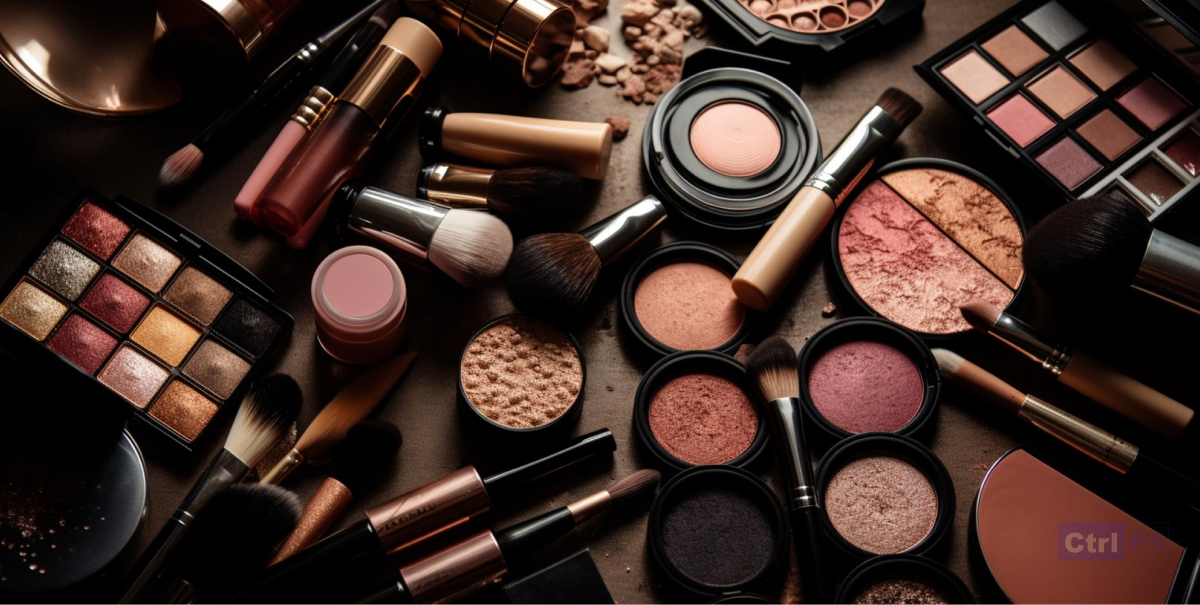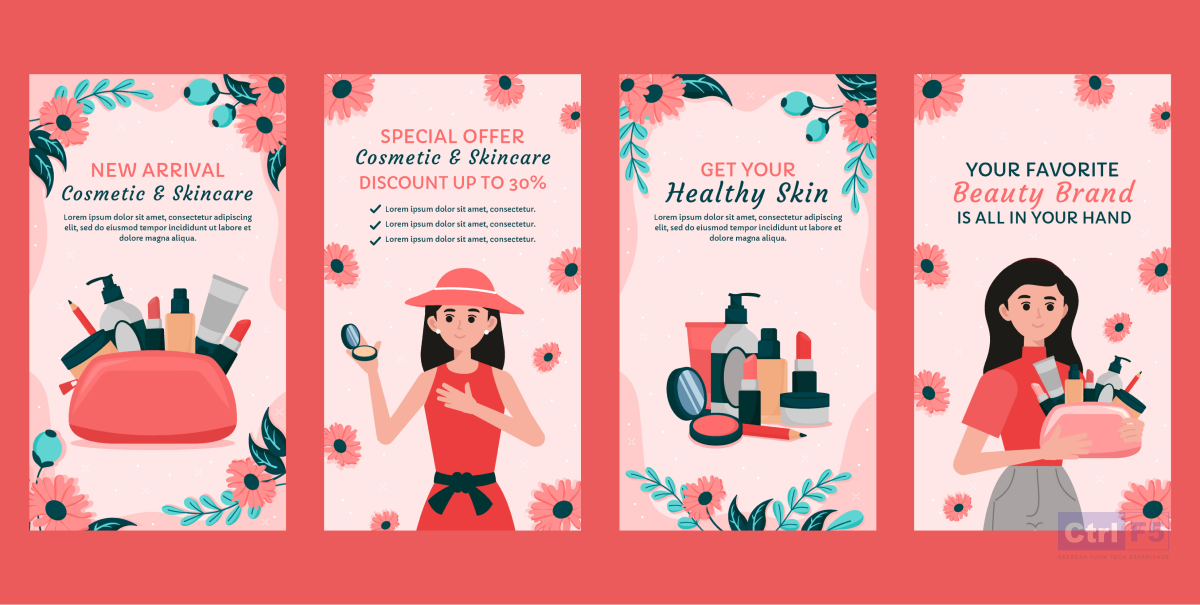How To Sell Beauty & Cosmetic Products Online with 8 Easy Steps
- Anurag Pandey
- Last updated on May 13, 2024
- eCommerce, Shopify, Shopify Plus
- 10 minutes read
Table of Contents
ToggleDo you spend your free time on YouTube watching makeup tutorials by beauty gurus? Do you save inspired makeup ideas on Pinterest? Do you dream of Selling beauty products of your own?
If so, you might be interested in cosmetics and want to begin with the selling beauty product business.
Cosmetics are used by everyone, regardless of gender, for basic hygiene or aesthetic enhancement.
Try to sell different makeup products that will help your brand stand out from the crowd. People are continuously looking for anything from hair products to makeup, skincare, and everything in between, thus the cosmetics sector is thriving. Though beauty brands are abundant, you can enter the competition and dive out a place in the sun if your product offering finds a target market. Despite the challenges, the cosmetics industry stayed strong in covid period 2020. Statista predicts that e-commerce sales of cosmetic products in the United States will reach about $31 billion by 2026.
It can be difficult to locate a gap in the market if you opt to sell cosmetics online – beauty businesses are many in today’s online environment – but that doesn’t mean it’s impossible.
If you can create a selling beauty product brand online brand and carve out a niche for your business, you may be on your way to significant ecommerce success.
What exactly are cosmetics?
Many individuals want to appear and feel good, and they utilize cosmetics to help them do so, both men and women use cosmetics daily. In general, cosmetics are used to enhance or alter the appearance of the face or body through the use of makeup, lotions, and cleansers. Makeup is merely a subcategory of cosmetics.
The main difference between makeup and cosmetics is that makeup is a cosmetic but not all cosmetics are makeup. The main categories under cosmetics include:
- Skincare products: Shaving cream, Toners, Facial washes, scrubs, etc
- Haircare products: Shampoos, oils, and other styling products
- Fragrances: Body splashes, Perfumes, colognes, and many more
- Personal care products: Mouthwash, Deodorants, toothpaste, etc
- Colour Cosmetics: Includes all makeup and nail care products
Personal care is an essential component of our daily lives, and cosmetic goods play an important role. A wide range of product categories, including cosmetics, toiletries, hair products, and deodorants, have all grown in recent years.
The cosmetics sector has grown significantly over the last decade and is predicted to expand another 5% by next year. Skincare has also grown in popularity in recent years, accounting for 36% of global market growth according to Statista. Let us see some of the strategies that you can use to sell makeup products online.
How to sell Beauty & cosmetic products online Step-by-Step Guide
When it comes to how to sell beauty & cosmetic products online or starting your beauty firm, having a passion for the industry can be a great asset. However, developing a successful brand requires more than simply desire. Here are a few things to take steps for selling beauty products:
1. Find your niche
On the market, there are over 600+ cosmetic brands available. If you want to compete in this industry, you must have something distinctive to offer. Investigate current beauty market trends and identify your target audience. Choose a product category and extensively review the products in it as well as the technologies utilised to solve consumer concerns.
Here are some important cosmetics business trends to consider while choosing a niche:
- Cosmetics with color
- Makeup that seeks specific skin tones
- A preference for vegan and cruelty-free cosmetics
- Haircare for specific hair colors, textures, or styles
- Increased awareness among consumers regarding chemicals.
2. Research your competition
After determining your desired niche, you should begin researching other brands in that same sector on the internet. This will provide a better understanding of what is already available as well as identify potential holes that your brand may address.
Examining your competition is another excellent learning tool. Consider brands that have a long history in the cosmetics business. They must be doing something right if they’ve been in the game for that long. It’s a chance to learn from the finest.
Your study must also be thorough. Dive deep and assess from a business standpoint. Examine their logo, brand story, beliefs, and how they handle themselves online and offline.
You might even go a step further and analyze how your competitors develop their marketing plans.
Here are the four P’s of marketing at work:
1. Product,
2. Pricing,
3. Place, and
4. Promotion.
Look at where they’re heading right now and start thinking about how your brand can get a piece of the market pie.
3. Create a business plan
In the cosmetics line, product development is expensive. Start with a solid business plan that highlights every small detail to determine the goals of your business and how to achieve them. Here is an ideal list to maintain:
- Online store business name idea, founder details, your product or service offerings,
- Funding
- Risk analysis
- Sales and Marketing
- Target market research
- Plan of execution – operations, management, accessibility
- Financial analysis – cost, investment, income, and revenue projections.
4. Add product description
In the cosmetics market, providing a detailed product description is critical. Customers cannot try your goods before purchasing them when you sell online, therefore provide thorough instructions to your customers.
Product swatches, ingredient lists, cautions, and allergy notices should all be included. Describe the product’s texture, finish, application, and use as well. If you are using the Shopify ecommerce then you can use Sidekick and Magic AI features for product description
5. Design Your Branding, Logo & Packaging
As you explore potential suppliers, you’ll find that most take care of the labeling and packaging process for you; you supply your logo design and they do the rest. This is the simplest way to label and package your private-label cosmetics—it produces a professional look and ensures that your labels are correct (i.e., ingredient lists and other requirements).
The labeling and branding of your makeup products should have a professional touch. Many private-label cosmetics suppliers also provide free images of your branded products.
Most private-label cosmetics suppliers charge label printing and packaging fees on top of your product cost, so be aware of this during your research and planning. These fees are listed clearly on most supplier websites. If you have any questions, a call to the customer service line should clarify any packaging fees or process questions you have.
Most suppliers ask you to upload your logo with your order to get your logo on your products. Suppliers provide logo specifications, including the number of colors allowed, size restrictions, and file types.
If you don’t have the design skills to create your logo, you can find budget-friendly artists to design an outstanding logo on freelancer websites like ControlF5 with experienced team members of Shopify experts.
6. Find a Manufacturer or Supplier
You can work with a manufacturer who creates your one-of-a-kind product or with a generic manufacturer who will allow you to rebrand under your label. This means you’ll need to identify trustworthy manufacturers and run background checks on everyone before selecting on one that fulfills your requirements.
To make your cosmetic goods stand out, you can also vary the color or aroma of generic products. Seek references from people who are already in the sector if you are having trouble locating a trusted source.
7. Decide How to Sell Your Cosmetics Line
Before you place your first purchase, you must decide how you will market and sell your private-label cosmetics line. You can begin with a single sales channel, add products to an existing shop, or set up multiple sales channels simultaneously.
Popular channels for selling cosmetics include:
- In-store: Selling cosmetics at a salon, spa, specialty fashion boutique, or natural foods shop using a point-of-sale (POS) system.
Online through your own website: Through an internet store, your customers can examine and purchase cosmetics from you. You can develop a strong brand image and consumer communication. When your store is up and operating, you can start advertising your brand and concentrating on customer purchase and retention. There are hundreds of eCommerce platforms on the internet, other like B2B or B2C commerce from which you can select according to your affordability and business needs.
Shopify,
Wix,
WooCommerce,
BigCommerce.
are a few great options for businesses and individuals.
- Social media: Instagram and Facebook have a sizable influencer base. Engaging micro and macro influencers to review beauty goods and advertise them to their audiences is one of your business prospects. Make careful to select people who share your brand’s values. Assume you are selling cosmetics that are organic and want to work with influencers who advocate the same beauty approach.
- Markets: The most popular marketplaces, such as Amazon and Flipkart provide millions of buyers with a diverse choice of product categories, including beauty. Joining a marketplace community might provide a good opportunity to reach a large audience at the outset of a business.
- Sell to other retailers: Because you are developing your line, you can sell those products wholesale to boutiques, spas, and brick-and-mortar stores.
8. Keep Up with Beauty Industry Trends
Every business owner worth his or her salt should be aware of and follow current beauty trends and preferences. To sell cosmetics, you must provide what buyers anticipate and reflect current trends on your product sites. It will assist you in staying ahead of the competition and tailoring marketing to hot subjects and items.
Furthermore, keeping up with cosmetic trends can boost sales and revenue. Offering products in high demand and relevant to current trends increases the likelihood of attracting clients and increasing revenue for a cosmetics firm.
Tips to Sell Beauty Products
A. Use Social Media: One of the most significant tools for online beauty product retailers is social media. It may be used to market your products, interact with customers, and establish trust and credibility for your store.
B. Make Targeted Ads: Make ads that are specific to your desired buyer. To reach out to potential customers and direct them to your website, use Facebook and Google Ads.
C. Discounts and promotions: Offering discounts and promotions is an excellent strategy to attract clients and increase sales. Consider providing package discounts, free delivery, or loyalty program perks.
D. Focus on Customer Service: When selling beauty products online, providing excellent customer service is critical to success. Respond immediately to client inquiries and maintain a return/exchange policy.
E. Monitor Your Results: Keep an eye on your sales and marketing campaigns to determine what’s working. This will allow you to make more educated decisions on how to improve your strategy in the future.
Beauty for Everybody
Let us strive to appreciate the beauty of our world.
“Makeup is a weapon that helps you express who you are from the inside, not a mask that covers up your beauty.”
Indeed, the world of how to sell beauty & cosmetic products online is filled with difficulties. Challenges can, however, be transformed into adventures with the right attitude, vision, and collaborators. As we can see, beauty should come from within, but makeup gives it more heightened as that can come from beauty and cosmetics.
There are different digital marketing master plans that you can apply for selling beauty products online. If you want to create an online store, provide payment links, connect payment APIs, provide customer service, collect leads, and sell on social media, you’ve come to the perfect spot.
We at ControlF5 can help you to start your dream of selling cosmetics. Also, you can hire Shopify developer in India to construct an ecommerce store for you that will sparkle brightly like a diamond.
Happy selling!
Anurag Pandey
Recent Posts
Categories
Hire Developers
About us
Popular Posts
Tags
Related Articles

10 Dropshipping Shopify Apps for Shopify Stores 2024
Dropshipping is not an easy business to get started; it requires time, strategy, and a proper way of operation. However, identifying how to choose dropshipping apps for the shopify store and using the proper tools helps to develop a successful dropshipping business.

Best Dropshipping Suppliers For Shopify Stores in 2024
Are you looking for how to find the best dropshipping suppliers for shopify? Then this piece of content is especially for you…!
Dropshipping is a wonderful way for future eCommerce entrepreneurs to scale their businesses.
How to Use Upsell: 10 Techniques to Boost Your Sales
Ah, the upsell—the salesperson’s best friend. When done correctly, it can also be very popular with clients. Many businesses use ads, emails, seasonal deals, and coupon codes to drive traffic and acquire new consumers. However, many ecommerce store owners overlook the need to raise the average order value.
Sign up for our Newsletter













